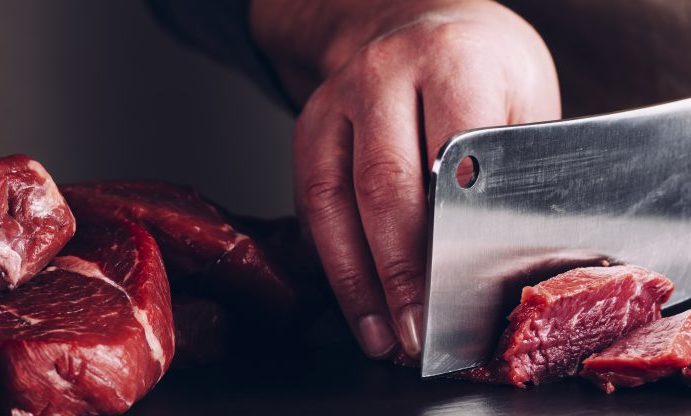Here at IrishBeef.co.uk, we’re big advocates for great grass-fed Irish beef cuts, cooked in the best possible ways to maximise flavour, enhance subtle tastes and tease out hidden textures. There are a large amount of different cuts – all with wildly differing tastes – which is why it pays to pay careful consideration to what cuts you include in your dishes.
Today we’re taking a closer look at some oft overlooked cuts – the neck, chuck and shoulder. These particular cuts are sourced from the front of the animal. The shoulder has worked hard over the lifespan of the cow, meaning the meat is slightly tougher than it’s more expensive counterparts. This does not have to mean that your dish will contain tough meat. Quite the contrary, to attain tender meat originating from the neck, chuck or shoulder more preparation is called for and also a knowledge of what best cut is required for your specific dish.
Neck, chuck and shoulder cuts are lean and tasty but require good trimming and slow cooking to release their rich, intense flavours and soft, flaky texture. They are some of the best cuts for mincing, casseroling or braising. If you do plan on grilling these cuts, just ensure you marinade them with a strongly acidic marinade. The acidity will help to break down some of the fats just as heat would in a slow cook.
SHOULDER TOP BLADE
Full of marbling, this steak is great on the BBQ! The connective tissue is still intact in this steak, which is the main differentiation between shoulder top blade and flat iron steak – this means it can be a little tougher if not prepared correctly. Although braising is an ideal method of cooking a blade steak, grilling and pan-frying at a high temperature can also work.
CHUCK STEAK
Perfect for dicing, then casseroling or stewing. Chuck Steak is full of collagen (connective tissue) so slower cooking is required to break this down if you’re after a smoother, juicier beef.
SHOULDER STEAK
Like the chuck steak above, for Shoulder Steak to be tender it will need marinating or slow cooking. The fibrous nature of these cuts means they are flavour packed but require additional marinating time and a stronger marinade.
CHUCK EYE STEAK
Taken from next to the rib eye steak, this cut has a similar flavour and texture as the rib eye at a fraction of the price! This is the best cut from this area of the animal to put straight onto the grill – unlike other cuts from the neck, chuck and shoulder which require longer, more delicate cooking methods.
MOCK TENDER STEAK
This cut comes from near the top blade and closely resembles tenderloin. As with all of the cuts mentioned in this article, it’s best to marinade before using. A combination of lemon juice, vinegar and pineapple juice will help break the tough cut down prior to cooking.
RANCH STEAK
A Ranch steak is rather slender. Be sure to cover sufficiently in oil and herbs… and keep a watchful eye over when cooking. The thinner the steak, the quicker it will cook.
BEST METHODS FOR COOKING
SLOW COOK
Cuts from the chuck, neck or shoulder are perfect for slow cooking. This is due to the nature of the collagen and the connective tissue running through them. Subsequently, slow cooking helps break down these connective tissues, resulting in melt in your mouth flakiness and full rich flavours.
GRILL
The key to a flavoursome, tender grilled steak from the Neck, Chuck and Shoulder is preparation. Leave any cut from this region (with exception given to Chuck Eye Steak) to marinade to ensure a tender, flavoursome steak. Steaks and whole cuts can be left in the fridge marinating for 12 to 24 hours (remember to remove 20 minutes before cooking to bring to room temperature). Cubes on the other hand may only need 2 or 3 hours of marinating


